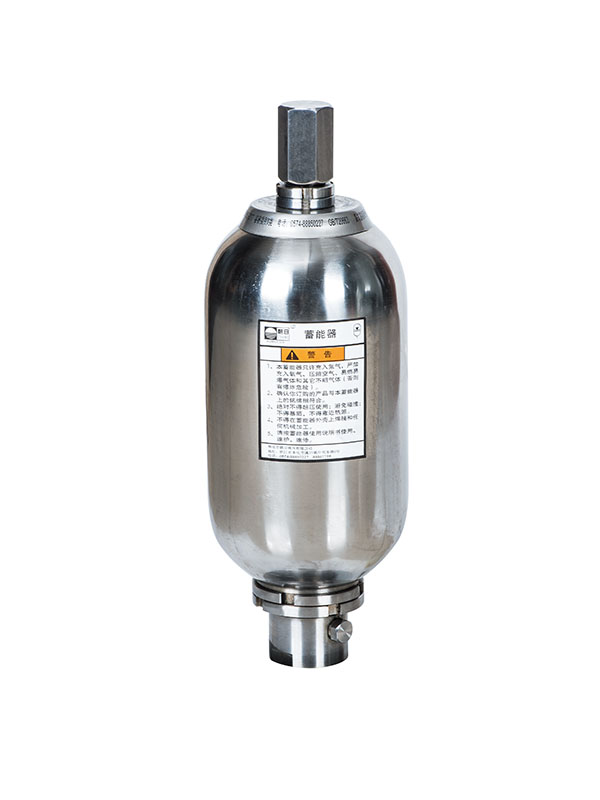Method of choosing
There are many parameters involved when choosing an accumulator, the most important ones are as follows:
1) Minimum pressure P1 and maximum pressure P2 - working pressure.
For safety reasons, the P2 value must be lower than or equal to the maximum working pressure specified by the chosen accumulator.
2) The volume of liquid that can be stored or utilized △V .
In order to correctly size the accumulator, this data is required in addition to the maximum and minimum pressures.
3) Method and use


It is important to determine whether the gas in operation is isothermal or adiabatic.
For example, the compression (or expansion) is carried out slowly (about 3 minutes) so that the gas maintains an approximately Stainless steel accumulator constant temperature, which is isothermal. (eg: pressure stabilization, volume compensation, counterweight, lubrication lines). In other cases (energy storage, pulsation buffering, shock buffering, etc.) due to the high transmission speed, the heat exchange is negligible, so the state is adiabatic. When the compression or expansion time is less than 3 minutes, this adiabatic condition will exist as a precursor.
4) Operating temperature
The working temperature determines the choice of capsule material and steel shell material, and also has an impact on the initial load pressure and of course the accumulator volume.
5) Type of liquid
This will determine the choice of material
6) Large flow required
The size of the volume Vo and the joint is related to the reaction speed.
7) Place of use
It is important to understand where the accumulator will end up being used so that the design can meet local design and test parameters.
From the above, it is possible to select the appropriate accumulator for the specific application required.

 English
English 中文简体
中文简体





